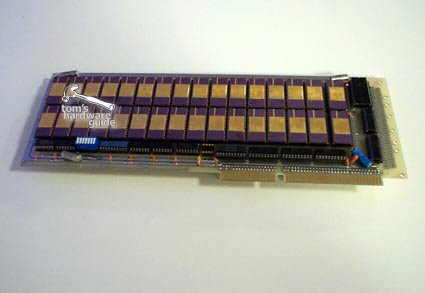Flash Memory Turns 25 Years Old
I mention "reportedly" since the cerebration note was published by SanDisk, but there are substantial doubts whether flash is really 25 years old today. In the end, it depends on your perspective what is considered to be the time of invention of Flash.
What we know for sure is that Toshiba's Fujio Masuoka invented flash sometime in the early 1980s and most sources today point at the 1984 Integrated Electronics Devices Meeting at which Masuoka discussed and detailed flash (NOR and NAND) for the first time. As it is the case so often with memory technologies, it took some time until flash went into production. Intel was the first company to ship flash memory devices in considerable numbers. The first device was a shoebox-sized 256 KB chip that was sold in 1988.
Throughout its history, there have been persistent rumors that flash will not be able to scale efficiently and will have to be replaced at some point. A reference may be this article I wrote for Tom's Hardware in 2005, at a time when Intel proposed Ovonics Unified memory (OUM) as a potential flash sucessor, SanDisk was talking about nanocrystals to extend the life of flash and Infineon was pitching the future of MRAM. Additional technologies that were discussed included FRAM (FeRAM), Polymer memory (PFRAM), PCRAM, Conductive Bridge RAM (CBRAM), Organic RAM (ORAM) and Nanotube RAM (NRAM).
None of them has come close to be challenging flash and, if today is any indication, flash will not be going away anytime soon.
Contact Us for News Tips, Corrections and Feedback
Get Tom's Hardware's best news and in-depth reviews, straight to your inbox.

Wolfgang Gruener is an experienced professional in digital strategy and content, specializing in web strategy, content architecture, user experience, and applying AI in content operations within the insurtech industry. His previous roles include Director, Digital Strategy and Content Experience at American Eagle, Managing Editor at TG Daily, and contributing to publications like Tom's Guide and Tom's Hardware.
